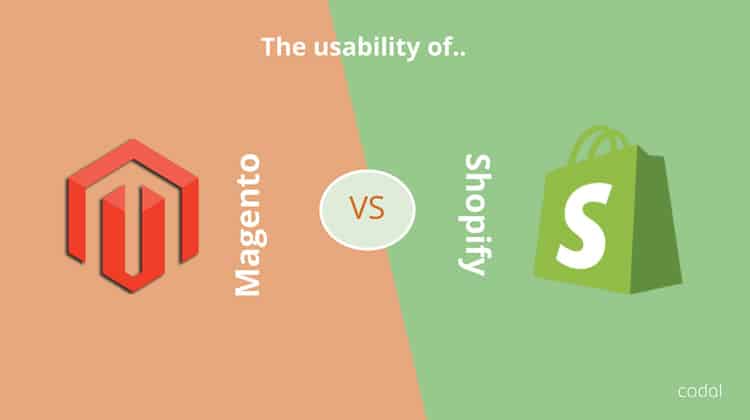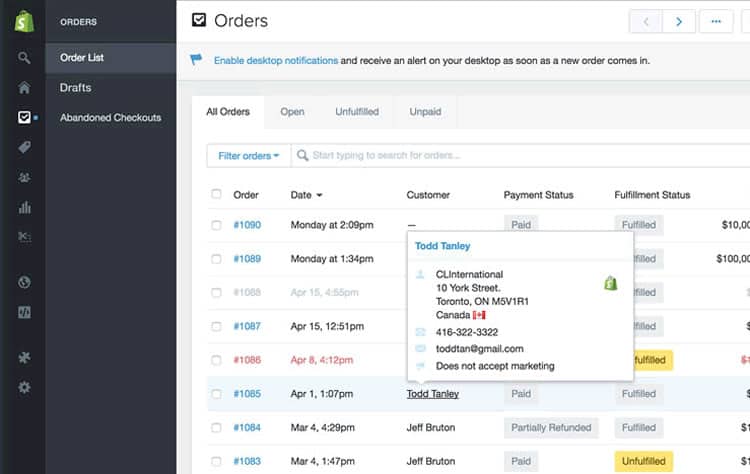
Picture this: you are at a discovery meeting with your ecommerce client and your team’s technical advisor. As the presiding UX specialist, your role in this meeting is to gather requirements and apply them towards a proposal and scope of work (SOW).
Your client is not sure which Content Management System (CMS) they would prefer and asks your team for a recommendation within the proposal. If this decision is left to the technical advisor, it will be based solely on the capabilities of the system.
But what about usability?
Believe it or not, there are some fundamental differences in the usability of different CMS platforms – and as a UX designer, you are responsible not only for the experience of the end user, but also of the client who must use the system.
If you have ever been asked to offer your opinion on choosing the right CMS for your clientele, you know it can be a little tricky to provide an answer, and supplement it with adequate reasoning. So what do you tell your client when they ask you “should I go with Magento or Shopify?“
Let us explore what makes Magento and Shopify so different in terms of usability. Both are considered as relatively strong eCommerce store building platforms.
Rather than being ‘yet-another’ Magento vs. Shopify article, this article will explore the differences in the way that each platform addresses onboarding, backend navigability, and hosting requirements.
1. Onboarding and Design Modification
UX designers know that complexity is a major factor in usability. It is an essential truth: the harder a task is, the less pleasant the experience (in most cases, at least).
Onboarding is one of those things that should never be difficult, yet it is among the greatest sources of friction for potential Magento users. In fact, setting up Magento is so difficult, that most businesses have to hire a specialized (and expensive) agency to take care of it.
Even after a professional has set everything up, Magento users still tend to require assistance from a development partner whenever significant changes must be made. And if you do not know how to use an FTP, it is doubtful that you will be able to update the design or add new extensions.
Shopify, on the other hand, is among the easiest of eCommerce content management systems to set up since it comes as a ready-to-use commercial platform. Where Magento caters to the development community, Shopify was designed with the merchant in mind. The initial setup process is offered through a wizard and consists of four steps that cover adding new items and choosing a theme, among other things.
There is no need to access the HTML or CSS when changes need to be made, unless the merchant wishes to create a very specific, complex functionality that has not been addressed by any of Shopify’s (over a hundred) apps or themes. There is even a built-in tutorial for new users.
2. Backend Navigability
Backends come in all shapes and sizes, and Magento and Shopify have very different approaches to backend design. As a UX designers, you ought to take into consideration the various factors that can affect backend usability.
Of the two, Magento can be considered the more powerful backend. Indeed, Magento has more features than Shopify. A comparison of the two reveals that while 62 features are available in both systems, Magento has 77 features that are unique to it, as opposed to Shopify’s 5. This includes more payment gateway, marketing and shipping extensions. Magento comes with inbuilt reporting and analytics tools that can generate insightful visualizations, among other things. With Magento, you have access to more advanced features. However you will need some advanced knowledge to be able to use them.
This poses a challenge for newcomers: how do you take advantage of a complicated backend, without prior knowledge?
Shopify’s advantage lies is in the usability of its backend. Many of the features offered on Magento are available on Shopify, except simplified, easier to use, and easier to understand – even if they are slightly less robust. Below is a screenshot of the backend of Shopify. As you can see, the interface appears to be very user friendly.

3. Hosting and Support Requirements
Magento (Community Edition) is a free, open source software that requires a self-hosted platform to run. This means that while the software is free, you are in charge of figuring out how to host it, where to host it, how to support it, and how to fix it. Usually, this translates into an expensive combination of paid hosting and technical support. Do not get me wrong. Hosting can be cheap but do you really want your clients’ credit card information stored on cheap servers? I would not. And any development agency worth their mettle will not be a cheap partner to your business. With regards to support, Magento does have a very well-established community but this is mostly technical in that you would still need someone who is relatively skilled in Magento development to be able to discuss any issues with this community.
Shopify is a commercial program that runs on a hosted platform. This means that while it is not a free product (it does have a 14-day free trial), Shopify is responsible for hosting your site, scaling as you grow, keeping up with peak traffic, providing support where necessary, and ensuring that all of your data is secure. And when I say secure, I mean it: Shopify is Level 1 PCI DSS compliant – the same level of security required from banks. This translates to a much more pleasant, relaxed experience. Business owners can focus on, well, owning a business, rather than spending valuable time and money on getting everything hosted and secure.
Conclusion: Shopify is Better if You Do not Have Dedicated Developers
At the end of the day, Magento and Shopify are very similar products – they provide businesses with platforms with which to lay the foundation of their online commerce. Even so, the experience offered by Magento is very different from the experience offered by Shopify. I am not talking about the end-user experience; I am talking about the backend user experience. It is almost as critical, to ensure that your clients’ day-to-day experience is excellent, as it is to ensure that their client’s experience is excellent.
This makes Shopify a better solution for small enterprises, especially startups while Magento would be the better solution for larger businesses that require more flexibility, customization and empowerment which they can achieve via their own or oursourced development team. It would also make Shopify an ideal candidate to test an eCommerce site as it requires a lesser investment to go-to-market.
So, the next time your team must make a decision as to which ecommerce platform to recommend a client, keep in mind the usability of that platform, and the important role this plays in the overall satisfaction of the client.
Disclaimer: This is an independent, non-paid-for write up that is based on the extensive experience we have gained when discussing eCommerce solution platforms with our clients. No-one connected in any way to Spotify or Magento was involved in the write-up of this article.
Want to learn more?
If you’d like to…
- get an industry-recognized Course Certificate in Usability Testing
- advance your career
- learn all the details of Usability Testing
- get easy-to-use templates
- learn how to properly quantify the usability of a system/service/product/app/etc
- learn how to communicate the result to your management
… then consider taking the online course Conducting Usability Testing.
If, on the other hand, you want to brush up on the basics of UX and Usability, then consider to take the online course on User Experience. Good luck on your learning journey!
